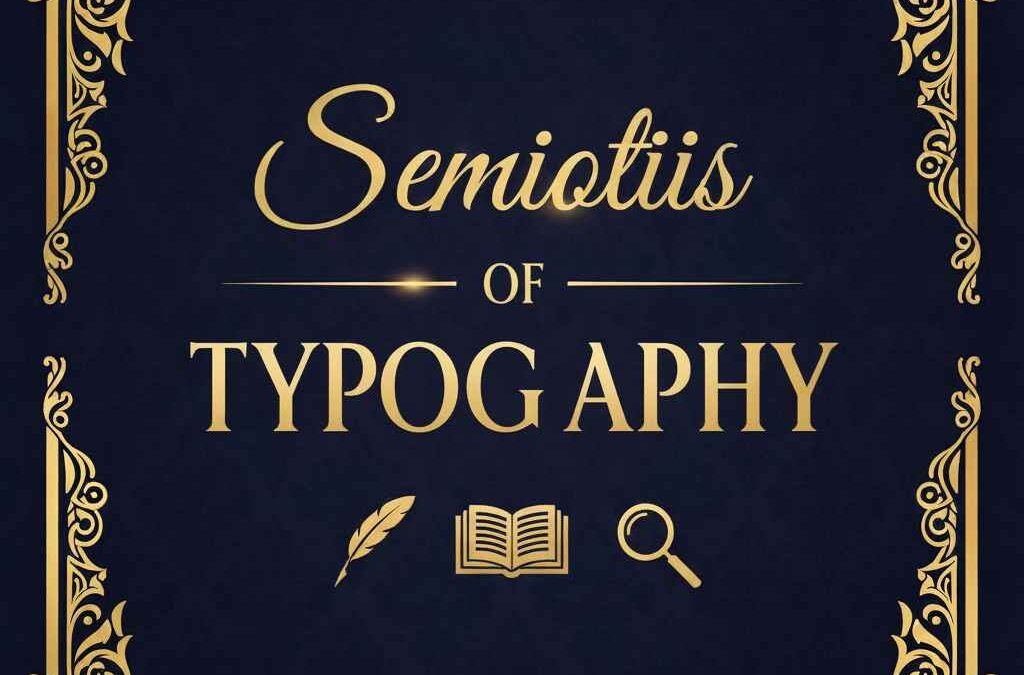Table of Contents
- Introduction: Why the Semiotics of Typography Matters
- What is the Semiotics of Typography?
- Core Principles of Semiotics in Typography
- The Semiotics of Typography in Branding and Marketing
- Case Studies: Luxury, Sports, and Retro Semiotics
- RaisProject Fonts and the Semiotics of Typography
- Practical Tips for Designers Applying Semiotics of Typography
- Conclusion and Further Reading
1. Introduction: Why the Semiotics of Typography Matters
The semiotics of typography explores how fonts and typefaces act as signs that convey meaning beyond the literal words they form. Fonts are not just letters on a page—they are cultural symbols that communicate emotions, values, and identity.
From high-fashion logos to sports brands and retro-inspired designs, every font choice sends a semiotic signal that shapes how audiences perceive a message.

2. What is the Semiotics of Typography?
Semiotics, a field pioneered by Ferdinand de Saussure and Charles Sanders Peirce, studies signs and symbols in communication. Applied to typography:
- Signifier: the visual form of the font (serif, sans-serif, script, bold, italic).
- Signified: the meaning or concept the font represents (luxury, trust, speed, nostalgia).
Thus, the semiotics of typography is about understanding how letterforms themselves act as symbols with cultural weight.
📖 Reference: Interaction Design Foundation – Semiotics
3. Core Principles of Semiotics in Typography
To apply the semiotics of typography effectively, designers should keep in mind:
- Cultural context: Meanings differ by culture. Blackletter might signal heritage in Germany but gothic in the US.
- Historical references: Didone serifs recall fashion magazines, while pixel fonts recall 80s arcade culture.
- Psychological effect: Round fonts feel friendly, while angular fonts feel aggressive.
- Consistency: Repeating semiotic signals reinforces brand recognition.
- Contrast: Combining different semiotic codes can create tension or harmony.
4. The Semiotics of Typography in Branding and Marketing

Brands invest in typography because fonts instantly communicate brand values.
- Luxury brands: Didot and Bodoni communicate elegance and refinement.
- Sports brands: Italicized, bold sans-serifs suggest motion and competition.
- Tech brands: Minimal geometric fonts project innovation and simplicity.
- Lifestyle brands: Script fonts imply warmth, friendliness, or creativity.
Typography is one of the first visual cues audiences notice, shaping trust and perception before they read a single word.
📖 Reference: Smashing Magazine – Typography and Brand Identity
5. Case Studies: Luxury, Sports, and Retro Semiotics
Luxury Semiotics
High-contrast serif fonts communicate heritage and sophistication.
Sports Semiotics
Dynamic, italic display fonts symbolize energy, speed, and adrenaline.
- Example: Sports Vehicle Font → ideal for athletic and motorsport branding.
Retro Semiotics
Pixelated or arcade-style fonts evoke nostalgia and playful energy.
- Example: Wac Man Font → reminiscent of classic 80s video games.
Racing & Futuristic Semiotics
Aggressive, bold racing fonts signal strength, innovation, and modern competition.
- Example: General Racing Font → perfect for automotive or e-sports branding.
6. RaisProject Fonts and the Semiotics of Typography
At RaisProject, we design fonts not just as letterforms but as semiotic tools that help brands tell their story. Each font carries specific cultural and psychological signals:
- General Racing Font → symbolizes futuristic speed, endurance, and cutting-edge design.
- Sports Vehicle Font → embodies energy, strength, and the competitive spirit.
- Wac Man Font → conveys retro nostalgia and playful creativity.
These fonts demonstrate how the semiotics of typography can be applied in diverse industries.
7. Practical Tips for Designers Applying Semiotics of Typography
- Know your audience: Different cultures read typographic signals differently.
- Match font to brand values: Luxury = serif, youthful = script, tech = clean sans-serif.
- Limit font choices: Too many signals create confusion.
- Test emotional impact: Ask how people feel about a font before finalizing.
- Use semiotics strategically: Fonts should reinforce, not contradict, your message.
📖 Reference: ResearchGate – Typography and Semiotics
8. Conclusion and Further Reading
The semiotics of typography provides designers with a framework to understand how fonts shape meaning, influence perception, and strengthen branding. Fonts are more than design elements—they are cultural codes that tell stories.

